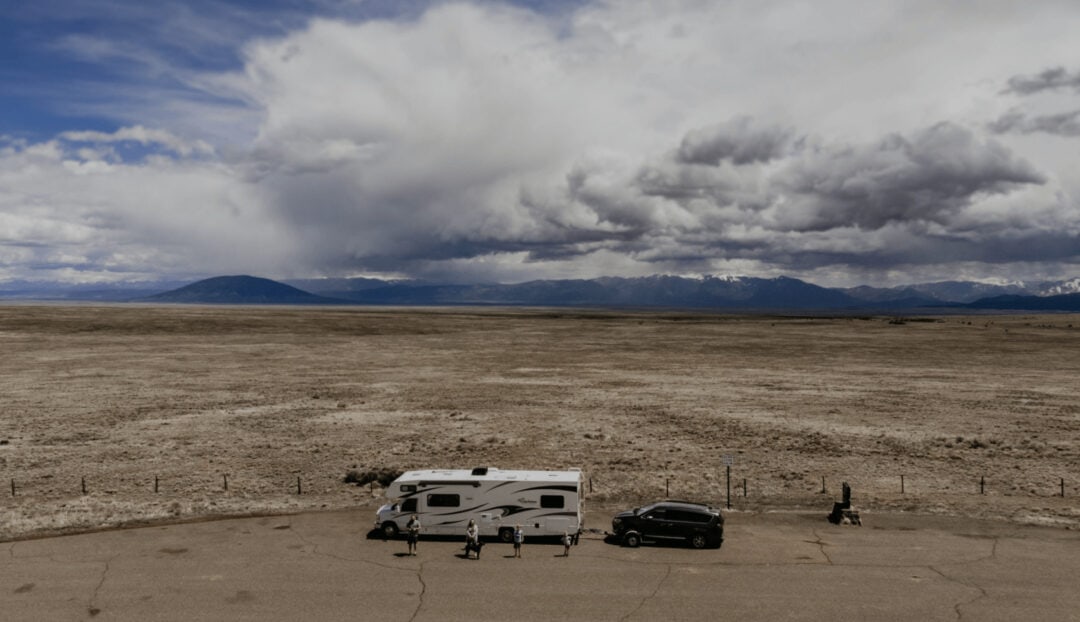Going on an RV trip doesn’t have to mean big spending or months of saving. With a little bit of research, careful planning, and some simple techniques, you’ll quickly realize just how affordable an RV trip can be.
Advice for non-RV owners
For many non-RV owners, the cost associated with renting an RV for a trip might seem sky high. And while it’s true that renting an RV can sometimes be more expensive than booking a hotel room, there are actually more opportunities to save with an RV.
10 mistakes beginner RVers should avoid
You have the ability to cook all meals, which greatly reduces the amount of money you have to spend on food. You can pack extra gear (bikes, kayaks, surfboards, skis) and eliminate the need to rent these items elsewhere. If you’re traveling with a family or large group, it might be tough to squeeze everyone into one hotel room (most standard hotel rooms can accommodate four people). And some hotels don’t even allow pets, or charge an extra pet fee. But with a wide variety of RV sizes and layouts to choose from, you’re likely to find one that fits your whole crew—dog included—without having to pay double.
Before you hit the road
While most people think of food, gas, and campground costs when putting together a travel budget, one factor that is often forgotten—but is still extremely important—is maintenance. Taking good care of your RV goes a long way in preventing major, costly repairs.
The ultimate guide to budget-friendly road trips
Just like a car, your RV’s oil should be changed regularly and the tires inspected frequently. If something in your rig needs fixing, do it sooner rather than later. Letting a problem sit for too long can end up costing you more in the long run. Double-check that your insurance and roadside assistance plans not only cover your tow vehicle but your RV as well. There’s nothing worse than breaking down and finding out that your insurance won’t pay to tow your rig to a mechanic.

Plan around peak travel times
When considering prospective destinations, make note of the peak travel seasons and accessibility—for example, fall foliage in New England or holiday weekends at national parks. Peak seasons will not only impact reservations and campgrounds rates but gas and grocery prices as well, which can vary based on demand and time of year. Tours and entry fees may also fluctuate by season, day of week, or even time of day.
To help save money, try to travel during shoulder seasons (commonly early spring and late fall) and visit the most popular destinations on weekdays or during slower hours. If you’re thinking about taking a longer trip—a few weeks or even a few months—consider staying in one place for longer. Most RV parks and campgrounds offer weekly and monthly rates, which can reduce your nightly cost. Minimizing your driving time and staying put can help keep the cost of fuel down as well.
Be mindful of gas prices
When deciding which route to take, try to use an online gas calculator to help budget. Roadtrippers has a feature that estimates total gas prices based on starting, midpoint, and endpoint destinations, as well as average miles per gallon.
Once your RV-friendly route is set, search for gas stations along the way and compare prices. Even if the difference is just a few cents, that can add up quickly when you’re averaging 9 or 10 miles to the gallon. Try to fill up well in advance of national parks and other popular tourist destinations, top off your tank before you hit a stretch of road with limited fuel stations (these have a tendency to be more expensive), and keep any border crossings in mind. Gas prices can vary by state based on taxes, types of fuel, and other variables like real estate.
Venture off the beaten path
Humans are programmed to do what is familiar and popular, and this includes visiting well-known tourist destinations. However, with a little extra research, you can often find a similar view, a self-guided tour, or an alternative hike without the added crowds or cost.
Another thing to keep in mind is that not every night has to be spent at a five-star luxury RV park. Sure, you might want to budget for one or two nights at a more upscale place, but other nights, your campground may be a roadside pullout, Bureau of Land Management (BLM) land, a trailhead that allows overnight parking, or a retail store parking lot open to nomads.
Roadtrippers is a useful resource (with reviews) for searching for free or affordable campsites.
To prevent trespassing or illegal overnight stays, always read posted signs and generally don’t stay longer than 14 days. Roadtrippers members have access to a filter showing business locations that allow overnight RV parking.
When it comes to saving a dime, limiting any unnecessary spending should be top of mind. Here are four things to remember:
More tips for budget-friendly RV travel
Pack for various situations: Always check the forecast before you go, including average temperatures and storm seasons. Being prepared for various weather conditions will prevent unnecessary shopping trips for warmer clothes, rain gear, or alternative footwear. It doesn’t hurt to travel with an umbrella, a rain jacket, waterproof pants, and warm layers just in case. Some other essentials include sunscreen, bug spray, and extra batteries, as these tend to be more expensive at rest stops and campgrounds.
Crunch the numbers: When researching your route and destinations, look into various pass options for state and national parks. Figure out how often you will visit to determine whether it is cheaper to pay for each entry or to purchase a multi-visit pass, such as America the Beautiful and Every Kid Outdoors. Likewise, plan ahead to see if there will be any toll roads or turnpikes on your route. If so, assess whether paying separately is more cost-effective or if you can save money with an E-ZPass or FasTrak account.
Cook in the RV: An RV is a home on wheels, which means you can limit the cost associated with restaurants by cooking your own food. However, if you do want to eat at a local restaurant, consider eating there for lunch instead of dinner—lunch menus still allow you to experience the cooking, without paying the premium pricing. When meal planning, be sure to include some of your favorite road trip snacks and beverages. This will prevent you from pulling over to buy higher-priced gas station treats. Additionally, food prices will vary by location. Produce, meat, and dairy are almost always more expensive in remote areas and can be harder to find, so stock up before you go.
Consider a membership: There are many different RV clubs and other types of travel memberships, including Roadtrippers, most of which are geared toward providing discounted services and support features. One of the biggest benefits of joining are the discounted rates at RV parks and campgrounds. Some other cost-saving perks include promotions at RV retail stores, fuel savings, propane discounts, and free dump station privileges. If you’re looking for a membership that is specific to campgrounds, then Harvest Hosts, Boondockers Welcome, and Kampgrounds of America are all great options if you use them regularly for travel.







